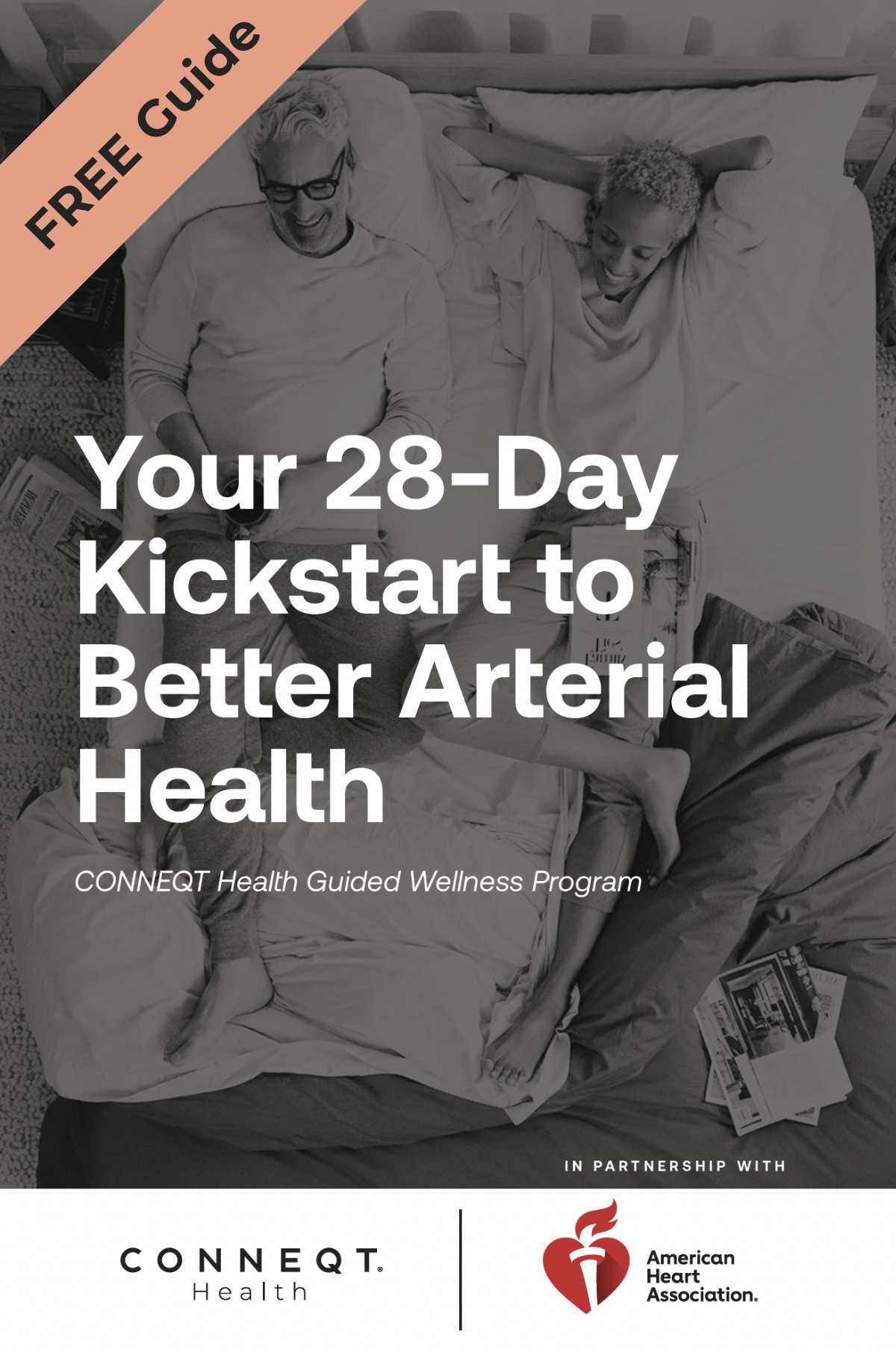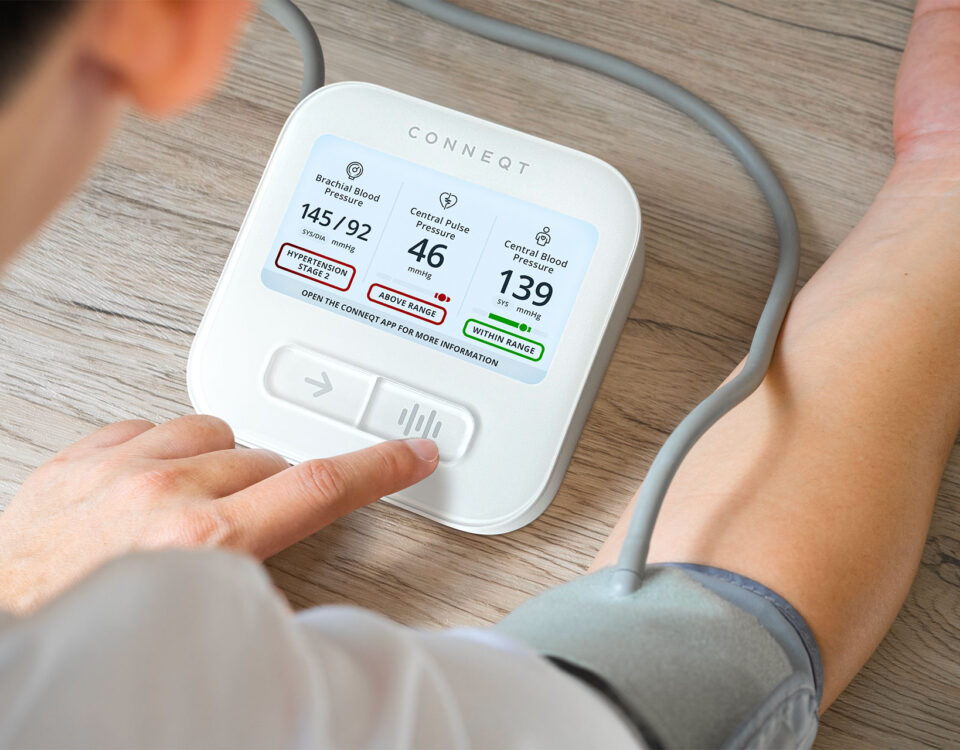In the United States, one person dies every 40 seconds from cardiovascular disease, according to the CDC. And the problem is just getting worse. Between 2005-2018, the number of people dying from blood pressure-related deaths soared by 38%.
Under the newest guidelines, which were revised in 2018, nearly half of all American adults now meet the criteria for high blood pressure (defined as a reading over 130/80 mmHG), yet up to a third of these high-risk patients don’t even realize they have it, according to the American Heart Association. One reason people are being underdiagnosed? Experts say current diagnostic protocols—which often don’t include regular monitoring of central blood pressure—allow many people suffering from this silent killer to fall through the cracks.
Research shows that central aortic systolic pressure is a more reliable and sensitive predictor of heart disease. It is also a better predictor of stroke, vascular disease, and kidney failure than traditional brachial blood pressure.
“A traditional brachial cuff measures pressure in your arm, but that’s not the same as the pressure in your heart,” the Director of Hypertension at the University of Pennsylvania School of Medicine, Raymond Townsend, M.D., says. To get an accurate picture of cardiovascular risk, he says you need to measure central aortic systolic pressure because it reflects key factors like arterial stiffness—a measure of the rigidity of blood vessel walls.
How Arterial Stiffness Affects Central Blood Pressure
As people age, their blood vessels (particularly the large aortic ones) become less elastic, which makes it harder for the heart to pump. This condition, known as arterial stiffness, causes blood to move more quickly through the arteries, increasing blood pressure.
“It’s like a guitar string,” Townsend says. “The tighter you make it, the higher the pitch and—in the case of circulation — the faster the blood flows.”
While arterial stiffness (which is measured in pulse wave velocity — the speed at which waves move down the vessels) increases in the aorta with each decade, pulse wave velocity (or PWV) stays relatively stable in the smaller arteries as you age, Townsend says. This explains why systolic pressure may be up to 40 mmHg higher in the brachial artery than in the central aorta.
What is Central Blood Pressure?
This term refers to pressure in the ascending aorta, the large artery that pumps blood from the heart to the target organs (brain, heart and kidneys). Because it measures pressure at the area where it matters most, researchers believe it provides a more complex and nuanced view of vascular health than traditional brachial blood pressure and is more accurate at assessing the probability of cardiovascular problems like heart attack and stroke, as well as the possibility of end-organ damage such as kidney disease and Alzheimer’s.
Historically, doctors have relied on instruments called sphygmomanometers to measure blood pressure at the brachial artery, the main vessel that supplies blood to the muscles in your upper arm and elbow. They refer to this as peripheral blood pressure.
But this reading paints an incomplete picture because systolic pressure varies as blood travels along the arterial tree away — the branching system of arteries—from the heart toward the peripheral organs. As Dr. Townsend noted, the large arteries, particularly the aorta, become stiffer with age than peripheral vessels do, which makes central aortic pressure a more accurate predictor of risk.
Until recently, the only way to measure central blood pressure was to insert an invasive arterial catheter into a patient. Doctors would then measure the speed at which the blood traveled (pulse wave velocity) from the aorta to the peripheral arteries (say, the femoral artery in the leg) by dividing the distance from the time it takes to travel there. The invasive nature of this technique precluded it from being adopted in wide scale clinical studies and everyday practice.
How Central Blood Pressure Is Measured Now
In recent years, technological advances have made it possible for doctors to measure central blood pressure non-invasively using devices like a SphygmoCor machine. Using pulse wave analysis and pulse wave velocity, these devices can provide a much more accurate picture of arterial stiffness and other key predictors of hypertension and cardiovascular disease.
“With a traditional brachial cuff, we just get to see the top of the curve [systole] and the bottom [diastole] and all the other info is lost,” Dr. Raffaele says. “The SphygmoCor is really the gold standard for blood pressure measurement these days. The shape of the wave tells us a lot about the health of the arterial tree.”
Do You Have Hypertension?
Central Blood Pressure
- Optimal: under 110 mmHg
- Prehypertension: 110–129 mmHg
Peripheral Blood Pressure
- Hypertension: greater than or equal to 130/90 mmHg
- Hypertension (Stage 1): 130-139/80-89
- Hypertension (Stage 2): 140+/90+
- Hypertensive Crisis: >180/120









